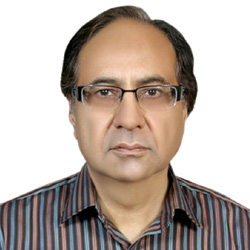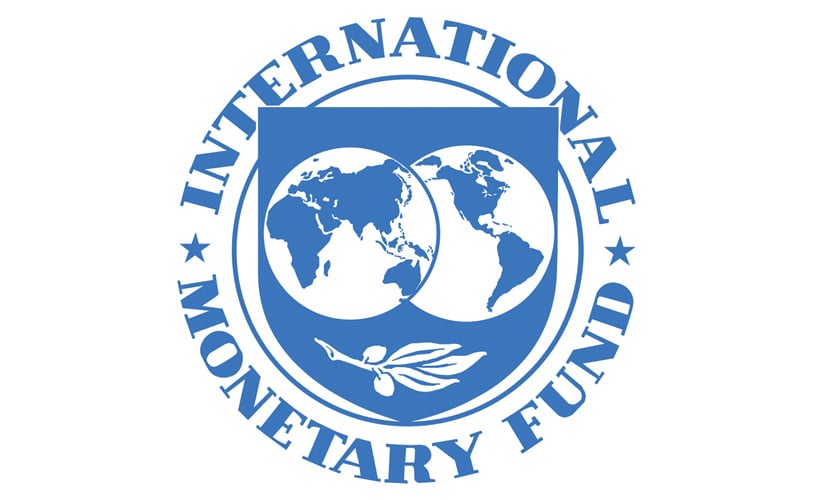INSIGHT
The World Bank and International Monitory Fund (IMF) have given up their overt and covert opposition against the China Pakistan Economic Corridor (CPEC) and are urging the government to ensure timely completion of the now $51.5 billion project to achieve six percent plus GDP growth rate in the coming years.
 Recently, in their separate reports, both the multilateral agencies have also lowered their forecast by saying that Pakistan’s growth rate will gradually increase to five percent at the end of the financial year 2016/17 from 4.7 percent of the last financial year.
Recently, in their separate reports, both the multilateral agencies have also lowered their forecast by saying that Pakistan’s growth rate will gradually increase to five percent at the end of the financial year 2016/17 from 4.7 percent of the last financial year.
The Word Bank warns in its report that Pakistan’s economy, which is growing at a decent pace is at risk due to delays in the implementation of the CPEC projects. “A delay in the completion of CPEC projects, as evident from the first year’s performance, and an inability of the government to mobilise revenues and rationalise expenditures can affect investment and hurt economic growth,” noted the World Bank in its biannual ‘South Asia Economic Focus Fall 2016’ report.
Both the World Bank and the IMF believe that Pakistan needs seven percent plus growth rate to ensure real improvements in the economy.
Interestingly, the officials of the World Bank and the IMF have linked their future growth rate with the success of CPEC that surprised independent economists who termed it a “double speak” meant to further confuse the government’s vital economic projections.
“Is it not an irony that World Bank and the IMF, which were the biggest opponents of CPEC, are today pleading for the project? I call this their dual face,” said renowned economist Dr Ashfaque Hasan Khan.
Dr Khan, who is currently the Principal and head of social sciences at the National University of Science and Technology (NUST), said that World Bank and the IMF had been insisting that Pakistan must confine to the expenditure limit of the Public Sector Development Programme (PSDP). Both the international agencies used to ask the government to disallow PSDP funds to be spent on CPEC related projects, he added.
“How come this change of policy,” Dr Khan asked, and hastened to add,” In fact they, especially the IMF wants to see certain increase in fiscal deficit so that Pakistan can be forced to once again seek yet another new bailout package.”
During its 8th and 9th review, the IMF in one of its box items had asked the government “not” to enlarge the scope of the PSDP to oblige CPEC projects, as it would increase fiscal deficit which was not good for the Pakistani economy.
But this sudden change in policy, allowing the use of PSDP funds for CPEC is intriguing, and a departure from the previous strict policy that sought to reduce expenditures with a view to achieving the fiscal deficit target.
Pakistani economy now revolves around CPEC and fiscal deficit. While CPEC seeks greater infrastructural development and completion of precious energy projects through monumental funding, achieving 3.8 percent fiscal deficit target means that the government will not enhance the current size of the PSDP.
Independent economists maintain that Pakistan must focus on growth through more spending, while the World Bank and the IMF had been insisting that fiscal consolidation and stabilisation was necessary to turn around the economy.
However, the good thing is that there is a growing realisation in official and unofficial quarters that growth must receive preference over economic stabilisation to create jobs and remove widespread poverty.
 In a changing environment, where foreign direct investment (FDI) has come down to less than $900 million annually from the peak of $5.5 billion in 2007-2008, the increasing size of the CPEC speaks volumes about future massive development and the removal of yawning energy crisis. With new Chinese and the Asian Development Bank’s (ADB) $8 billion loan, the size of CPEC has increased from $46 billion to $51.5 billion. The new loan is meant to renovate Karachi to Peshawar railway line.
In a changing environment, where foreign direct investment (FDI) has come down to less than $900 million annually from the peak of $5.5 billion in 2007-2008, the increasing size of the CPEC speaks volumes about future massive development and the removal of yawning energy crisis. With new Chinese and the Asian Development Bank’s (ADB) $8 billion loan, the size of CPEC has increased from $46 billion to $51.5 billion. The new loan is meant to renovate Karachi to Peshawar railway line.
Officials are hopeful that the CPEC size will further increase, in case other economies, including Saudi Arabia and Iran also join the project considering their interest in it. The good thing is that despite Indian and American opposition, CPEC is fast becoming a success story which will bring unprecedented prosperity in the next 20-30 years and at the same time develop a historic link between Gwadar and Kashgar, besides forging greater political, military, and strategic cooperation between Pakistan and China.
Those who are in the know of things are asking the government to remove apprehensions about the alleged change in the western route and make CPEC acceptable to all the provinces. Perhaps it was in that backdrop, the Chinese embassy had issued last week for the first time a categorical statement denying that there was any change in the western route. It said the project needed to be completed in time by removing all kinds of differences about it.
The embassy statement is said to have been issued after a special Senate Standing Committee on the CPEC claimed that Gwadar, a centrepiece was being ignored and that the funds were being allocated to upgrade Karachi Port. The committee also accused the PML-N government of refusing to accord priority to the western route which covers cities like Turbat, Zhob, Burhan, and Panjgur. These are serious allegations and need to be removed by taking into confidence political leaders and their parties.
Part of the problem is the faulty planning of the CPEC by the planning and development ministry, whose in-charge Ahsan Iqbal lives in a state of denial and has always contradicted reports about the designing and the execution of the CPEC related projects. The problem is that he is hardly available to clarify things about his ministry and the important developments over CPEC.
The way things are unfolding, the cost of projects under CPEC continues to increase. Particularly of the power projects, with government allegedly allowing and accepting higher project costs, forcing its critics to say that it is all about “commission”.
The cost of the energy projects stands at $33.79 billion and given the timeline for completion, power projects will hopefully add reasonable generation capacity by 2017/18. However, they are not expected to offer any tangible relief to the people in terms of the fast growing demand for electricity.
The first casualty was the much trumpeted Gadani Power Park where 10 power projects worth $8 billion were to be set up to generate 6,600MW of electricity from expensive imported coal. The matter began to go sour when $5 billion additional cost was worked out for developing allied infrastructure. The project eventually collapsed as the Chinese investors abandoned the project.
Despite criticism and scepticism, the CPEC is an important project that would also help develop the dormant small and medium enterprises in a big way. The officials of the Small and Medium Enterprise Development Authority (SMEDA) maintain that developing industrial zones along the trade route will offer huge opportunities of investment.
Now, when CPEC cost is increasing, how would the government achieve its 3.8 percent fiscal deficit target set for the current financial year against 4.3 percent of 2015/16. If one goes by the claims of the finance minister, the fiscal deficit will be reduced through improvements in fiscal discipline and deep routed reforms in the fiscal management system. The proposed fiscal deficit reduction will be achieved through a combination of better tax collection and tight expenditure.
He has also been saying that the debt-to-GDP ratio will be brought down to 60 percent of GDP in the next two years, in line with the Fiscal Responsibility and Debt Limitation Act of 2005.
How did the government achieve 4.3 percent fiscal deficit target last year? It was achieved by withholding Rs270 billion sales tax refunds of the exporters and by charging Rs230 billion advance tax. The total amount comes to Rs500 billion. The issue did not stop here as the government did not pass on 50 percent expected relief to the people in connection with the falling international oil prices last year and recovered an additional Rs960 billion petroleum levies. And the amount of Rs270 billion, Rs230 billion, and Rs950 billion totals Rs1,450 billion. The central bank in its last quarterly report admitted that sales tax refunds were stopped to achieve fiscal deficit target in 2015/16.
This is how the government bridged the gap between the income and expenditure, forcing independent economists, especially Dr Hafiz Pasha, Dr Ashfaque Hasan Khan, and Sakib Sherani to allege that the government grossly manipulated the budget figures to achieve last year’s fiscal deficit target.
The writer is a senior journalist based in Islamabad